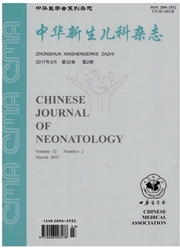

 中文摘要:
中文摘要:
目的了解雄激素对缺氧缺血脑损伤(HIBD)新生鼠脑组织磷酸蛋白聚糖(phosphacan,PC)及NG2蛋白聚糖(NG2)表达变化及其与缺血缺氧脑损伤后轴突再生的关系,探讨其神经保护作用机制。方法制作新生鼠HIBD模型,随机分为假手术组、HIBD组、雄激素干预组(于模型制成后即刻注射丙酸睾丸酮25mg/kg)。于缺氧缺血(HI)后24h、72h、7d、10d取脑组织制作石蜡切片和电镜切片,用免疫组化法观察PC和NG2蛋白聚糖在各组大鼠皮质和海马表达的动态变化,应用透射电镜对比观察各组海马和皮层神经元超微结构变化、细胞凋亡、神经元轴突再生及胶质细胞增生情况。结果①HI后脑组织超微结构变化:假手术组于术后24h细胞表面见较小的突起,72h、7d及10d细胞表面可见大小不等的突起,未见凋亡细胞;HIBD组HI24h、72h、7d和10d时细胞表面无突起或仅有较小突起;雄激素干预组的神经元轴突较HIBD组后增长明显,但较假手术组弱。②HI后脑组织PC和NG2的表达:假手术组海马和皮层均存在少量PC和NG2的表达,海马的表达高于皮层。HIBD组在HI后24h表达开始呈阳性反应,HI后72h明显增多,7d达高峰,10d后开始下降,但仍高于正常对照组;雄激素干预组,PC和NG2的表达时程和分布与HIBD组相似,HI后24h、72h、7d和10d在皮层和海马的表达水平明显低于HIBD组,均有统计学意义(P〈0.01)。结论PC和NG2可能是HIBD后抑制神经元轴突再生的重要因子之一,雄激素可能通过调节胶质细胞形态结构和功能抑制PC和NG,表达促进神经元轴突再生,从而发挥神经保护作用。
 英文摘要:
英文摘要:
Objective To study the effects of androgen on the expression of phosphacan and NG2 proteoglycan ( NG2 ) and neurite regeneration in neonatal rats with hypoxic-ischemic brain damage (HIBD) and the potential mechanism underlying the protective effect of androgen against HIBD. Methods One hundred and twenty neonatal Sprague-Dawley rats were randomly divided into three groups: sham-operated, HIBD and androgen treatment. HIBD was induced by the ligation of left common carotid artery and hypoxia exposure. The androgen treatment group rats were injected with testosterone propionate (25 mg/kg) immediately after HIBD. Phosphacan and NG2 expression in the cortex and the hippocampus was detected with the immunohistochemical method 24 and 72 hrs and 7 and 10 days after hypoxia-ischemia (HI). The ultrastructure and neurite regeneration of neurons in the cortex and the hippocampus were observed under a transmission electron microscope. Results The neurite regeneration was obvious in the sham-operated group, but seldom in the HIBD group. The androgen treatment group showed increased neurite regeneration compared with the HIBD group. There were fewer phosphacan and NG2 positive cells in the cortex and the hippocampus in the sham-operated group. Phosphacan and NG2 expression in the cortex and the hippocampus was observed at 24 hrs, increased at 72 hrs, and peaked at 7 days after HI in the HIBD group and remained at a higher expression 10 days after HI than in the shamoperated group. The levels of phosphacan and NG2 expression in the cortex and the hippocampus in the androgen treatment group were significantly reduced compared with those in the HIBD group 24 and 72 hrs and 7 and 10 days after HI ( P 〈0.01 ). Conclusions Phosphacan and NG2 may be important inhibitory factors for neurite regeneration following HIBD in neonatal rats. The neuroprotection of androgen against neonatal HIBD is produced possibly through an inhibition of phosphacan and NG2 expression.
 同期刊论文项目
同期刊论文项目
 同项目期刊论文
同项目期刊论文
 期刊信息
期刊信息
